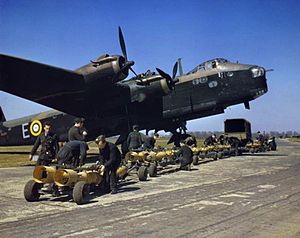In March he was told to rest, and was sent to Canada to ferry American-built aircraft to Britain. Having delivered three Hudson bombers, he tired of being separated from his new wife and volunteered to return to No 103.
On July 24 1941 a major daylight raid was mounted with 100 bombers against the German capital ships at Brest. Max was leading a section of Wellingtons with no fighter escort, and losses were heavy. But he pressed home his attack, and his bombs were seen exploding on a dry dock. He was awarded the DFC.
Max became the deputy chief instructor at a bomber training unit and found it almost as dangerous as operational flying – on one occasion his student crashed on to a small hilltop after missing the runway as he tried to land.
In July 1943 Max’s short service commission was completed, and he reverted to the RNZAF as a squadron leader. Almost immediately he was informed that it had been decided that a native New Zealander should command No 75 (NZ) Squadron and he was promoted to wing commander.
Max began operations on August 19 1943, flying the Stirling bomber from an airfield near Cambridge. The Battle of Berlin was under way and the Stirling, unable to climb to the higher levels of the Lancaster and Halifax, suffered heavy losses.

Max flew operations with his crew but, as the squadron commander, he was not expected to fly on every sortie.
He found the lonely wait for the return of his young crews very stressful, and on some occasions he lost five in a single night. He insisted that it was his job to inform the next of kin, and he would spend the next morning writing personally to them, sometimes as many as 35 letters.
The Stirling was eventually withdrawn from long-range bombing operations, and Max and his crews flew mining sorties and parachute drops to resistance groups.
After converting to the Lancaster and flying a few more operations in support of the impending D-Day landings, his tour ended in May 1944, when he was awarded the DSO, an award that he always claimed belonged to his air and ground crews.
Max returned to New Zealand to command a flying training airfield near Christchurch. In 1947 he accepted a permanent commission in the RAF, returning to England as a flight lieutenant.
Having attended a course at the RAF Flying College he commanded the bomber squadron at the Aeroplane and Armament Experimental Establishment at Boscombe Down, where the new jet bombers for the RAF were being tested.
He later commanded a night fighter squadron in Germany before returning to the Air Ministry, where he looked after the careers of junior aircrew. He then served at the Nato Headquarters in Naples.
As a group captain, Max commanded an air navigation school before taking up another job in the personnel department at the Air Ministry. In 1965 he was appointed an ADC to the Queen. He retired from the RAF in November 1968.
After a period as the secretary of the Ski Club of Great Britain he worked in the personnel and training department of Marconi Space and Defence Systems before retiring at 65, when he was able to pursue his golf with the EGG (Elderly Gentlemen Golfers), tend his garden and devote time to his 10 grandchildren.
Roy Max died on July 1. He married, in 1940, Joan Legge, who survives him with two sons and a daughter.” (Obituary courtesy of the Daily Telegraph.)






